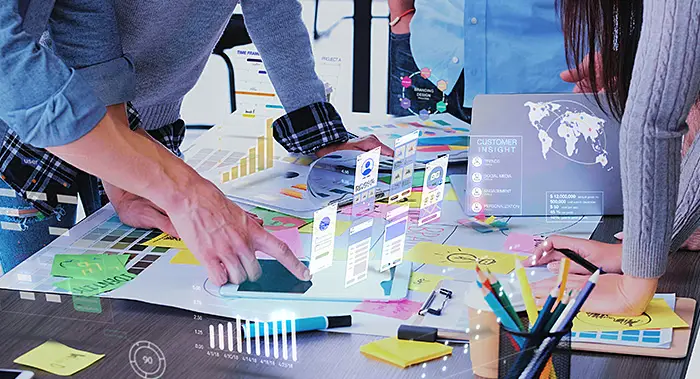Asia is no longer just the world’s growth engine—it’s the battlefield where the future of global commerce is being decided. For companies chasing scale and dominance, survival depends on one thing: a pipeline of high-quality leads that convert into real revenue.
This isn’t about chasing vanity metrics or filling databases with names that go nowhere. It’s about building a sustainable, repeatable system of B2B Lead Generation for Asia that delivers measurable impact.
In 2025, lead generation is no longer a “nice-to-have” tactic. It is the frontline of growth, the pulse of every ambitious organization, and the defining factor between companies that thrive and those that fade into irrelevance. For growth-hungry businesses, particularly in hubs like Singapore, India, and Southeast Asia, the question is no longer if they should invest in lead generation—it’s how fast and how strategically.

The New B2B Buyer Reality: Why Old Playbooks Don’t Work
Ten years ago, business development was straightforward: call, pitch, close. But Asia’s B2B buyers have rewritten the rules. Today, they’re digital-first, skeptical, and ruthless in vetting vendors. Nearly every purchase decision begins with research, peer reviews, and content consumption long before sales ever enters the room.
The rise of millennials and Gen Z in decision-making roles has accelerated this shift. These buyers value transparency, credibility, and relevance. They won’t respond to generic outreach. They want proof—case studies, results, thought leadership—that shows you understand their market realities.
This means companies can no longer rely on outdated sales-heavy tactics. They need a strategic mix of B2B Lead Generation for Asia that aligns with buyer expectations, leverages digital platforms, and respects cultural nuances. Those who cling to the old ways will watch competitors seize their market share.

Essential Channels: Where the Future of Leads Will Be Won
The 2025 playbook isn’t about doing more—it’s about doing smarter. The most successful companies are treating channels not as isolated campaigns but as interconnected growth engines.
- Account-Based Marketing (ABM): Hyper-targeted campaigns that zero in on high-value accounts.
- Content Marketing: Buyers want insight, not fluff. Companies positioning themselves as thought leaders through strong storytelling are shaping markets.
- Social Media: LinkedIn drives engagement across Asia, but regional platforms like WeChat in China and Line in Japan can’t be ignored.
- AI-Powered SEO: With generative AI influencing search, businesses optimizing for smarter, intent-driven queries are winning the visibility battle.
Pulling these channels together under a unified B2B Lead Generation for Asia strategy ensures you’re not just visible—you’re memorable. The companies that master integration will dominate.

The Tech Backbone: Tools That Separate Winners from Losers
Technology is no longer optional—it’s the backbone of lead generation. Without the right stack, you’re running blind.
- Marketing Automation: Streamlines campaigns, nurtures leads, and keeps engagement consistent.
- AI Personalization: Tailors experiences, making every prospect interaction feel custom.
- Predictive Analytics: Moves businesses from guesswork to data-driven precision.
- CRM Integration: Aligns marketing and sales, ensuring no lead slips through the cracks.
Growth leaders are deploying B2B Lead Generation for Asia technologies that don’t just capture names but convert them into deals. The real question isn’t whether you’re using tech—it’s whether you’re using the right tech.

Strategies That Build Trust and Long-Term Value
Trust is the currency of B2B. In Asia, where relationships matter deeply, companies that focus on credibility are the ones building empires.
- Case Studies & Testimonials: Social proof is non-negotiable.
- Strategic Partnerships: Leveraging ecosystems amplifies reach.
- Webinars & Virtual Events: These position businesses as educators, not just sellers.
- Localized Campaigns: Respecting cultural nuance multiplies conversion rates.
Effective B2B Lead Generation for Asia isn’t transactional—it’s transformational. It turns prospects into believers and one-time buyers into long-term partners.

The Data Edge: Metrics That Actually Matter
You can’t improve what you don’t measure. The future belongs to companies obsessed with the right metrics.
- Conversion Rates: Beyond clicks, who’s actually buying?
- Cost per Lead: Efficiency is everything in competitive markets.
- Customer Lifetime Value (CLV): Winning customers is good, keeping them is better.
- Attribution Models: Understanding which touchpoints drive real ROI.
Companies investing in B2B Lead Generation for Asia must adopt a ruthless focus on measurement. Numbers don’t just tell stories—they expose weak spots and highlight winning plays.

The Role of Culture in Lead Generation
Asia isn’t a monolith—it’s a mosaic. What works in Singapore may fail in Japan. What resonates in India might fall flat in Korea.
Successful B2B Lead Generation for Asia adapts to cultural nuance. That means understanding decision hierarchies in Japan, leveraging speed and digital agility in Indonesia, and respecting guanxi (relationships) in China. Companies that master cultural intelligence build trust faster, shorten sales cycles, and close deals competitors can’t.

Scaling Lead Generation Across Borders
Expansion in Asia demands agility. Companies that want regional dominance must design scalable systems that flex with market demands.
This means localizing content, tailoring messaging, and deploying a multi-channel B2B Lead Generation for Asia strategy that travels across borders. Scalability isn’t about one-size-fits-all; it’s about one-system-fits-many.

Pitfalls to Avoid: The Silent Killers of Growth
Even with the best tools, many companies fail because they fall into common traps.
- Chasing leads without qualifying them.
- Over-automating and losing the human touch.
- Ignoring cultural nuance.
- Failing to align sales and marketing.
Avoiding these pitfalls requires discipline and humility. It also requires a relentless commitment to refining your B2B Lead Generation for Asia strategy until it consistently delivers results.
Conclusion: Building a Future-Ready Lead Generation Engine
The companies that win in Asia aren’t the ones with the biggest budgets—they’re the ones with the sharpest systems, the clearest strategies, and the deepest commitment to building trust.
The future of B2B Lead Generation for Asia is about more than leads. It’s about building resilient pipelines, future-ready engines of growth, and reputations that transcend borders.
In 2025, the winners won’t be the loudest. They’ll be the smartest, the most disciplined, and the most relentless in pursuing the right leads, in the right way, at the right time.




